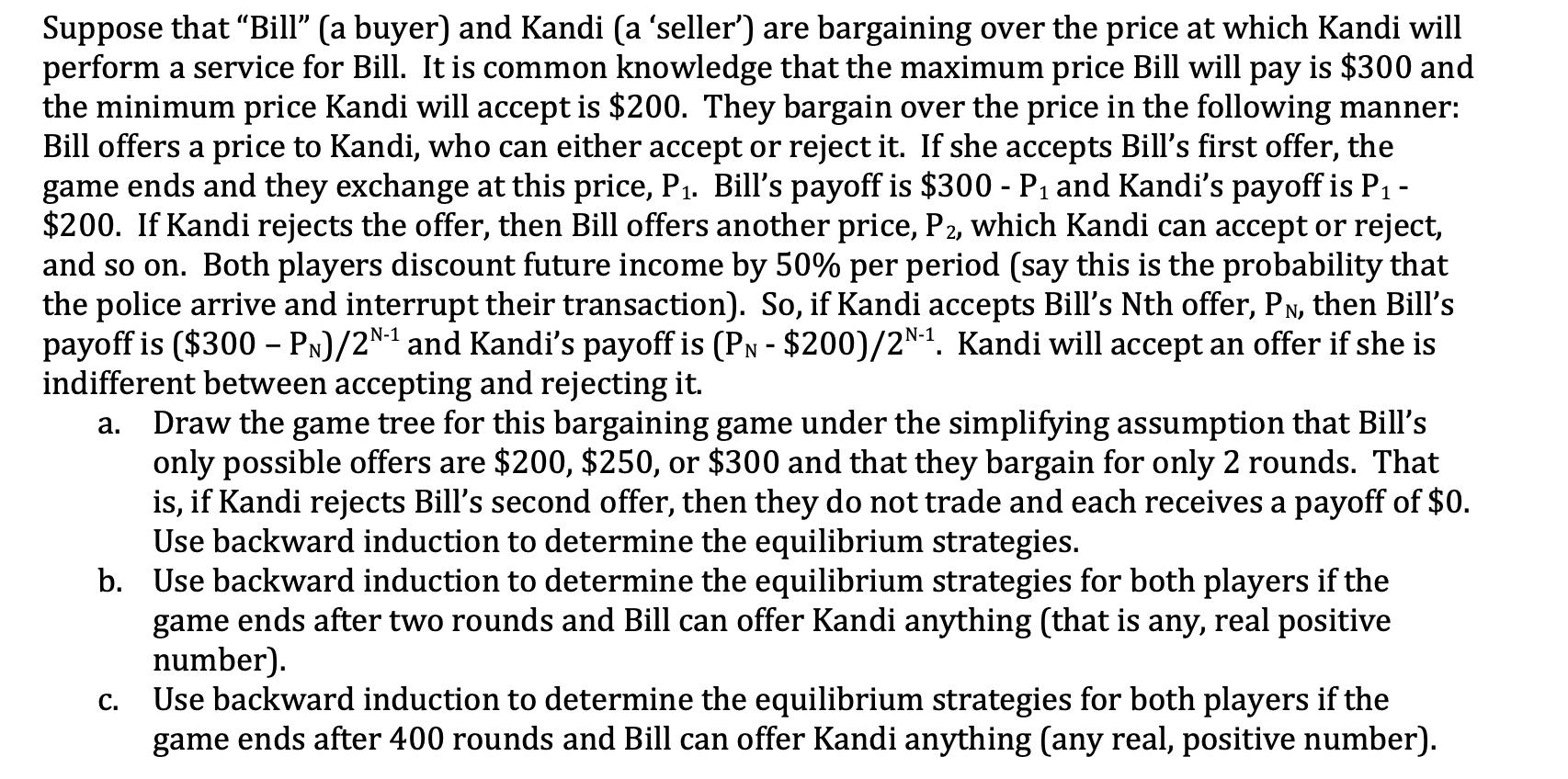Answered step by step
Verified Expert Solution
Question
1 Approved Answer
Suppose that Bill (a buyer) and Kandi (a 'seller') are bargaining over the price at which Kandi will perform a service for Bill. It

Suppose that "Bill" (a buyer) and Kandi (a 'seller') are bargaining over the price at which Kandi will perform a service for Bill. It is common knowledge that the maximum price Bill will pay is $300 and the minimum price Kandi will accept is $200. They bargain over the price in the following manner: Bill offers a price to Kandi, who can either accept or reject it. If she accepts Bill's first offer, the game ends and they exchange at this price, P1. Bill's payoff is $300 - P1 and Kandi's payoff is P1 - $200. If Kandi rejects the offer, then Bill offers another price, P2, which Kandi can accept or reject, and so on. Both players discount future income by 50% per period (say this is the probability that the police arrive and interrupt their transaction). So, if Kandi accepts Bill's Nth offer, PN, then Bill's payoff is ($300 PN)/2N1 and Kandi's payoff is (PN - $200)/2N1. Kandi will accept an offer if she is indifferent between accepting and rejecting it. Draw the game tree for this bargaining game under the simplifying assumption that Bill's only possible offers are $200, $250, or $300 and that they bargain for only 2 rounds. That is, if Kandi rejects Bill's second offer, then they do not trade and each receives a payoff of $0. Use backward induction to determine the equilibrium strategies. b. Use backward induction to determine the equilibrium strategies for both players if the game ends after two rounds and Bill can offer Kandi anything (that is any, real positive number). Use backward induction to determine the equilibrium strategies for both players if the game ends after 400 rounds and Bill can offer Kandi anything (any real, positive number). . .
Step by Step Solution
★★★★★
3.40 Rating (150 Votes )
There are 3 Steps involved in it
Step: 1
Answer a The decision tree for just two rounds is shown below Now let us do backward induction We see that in second offer Kandi pay off by accepting ...
Get Instant Access to Expert-Tailored Solutions
See step-by-step solutions with expert insights and AI powered tools for academic success
Step: 2

Step: 3

Ace Your Homework with AI
Get the answers you need in no time with our AI-driven, step-by-step assistance
Get Started


